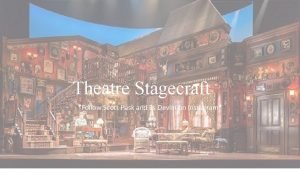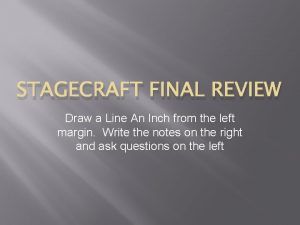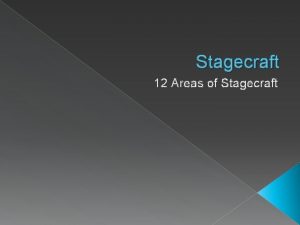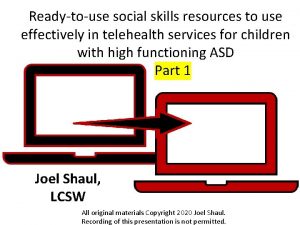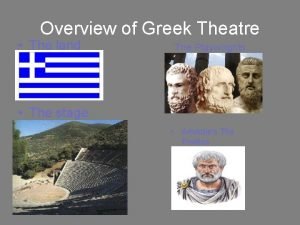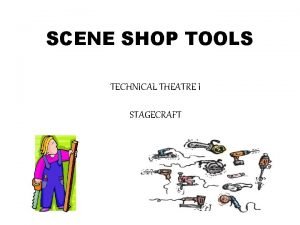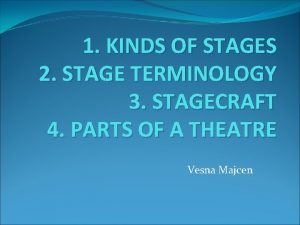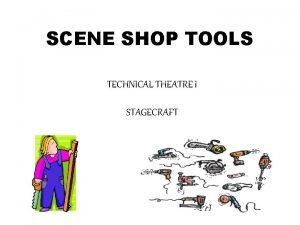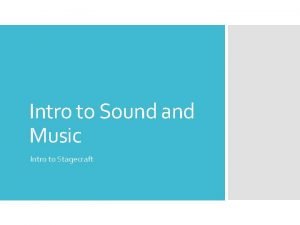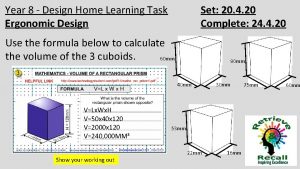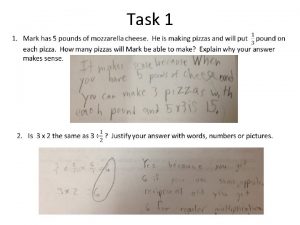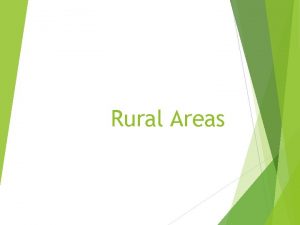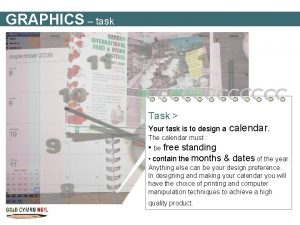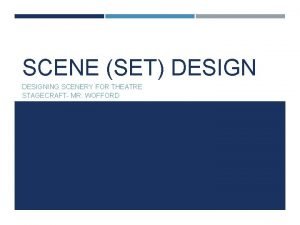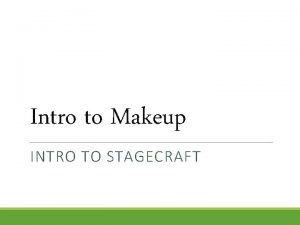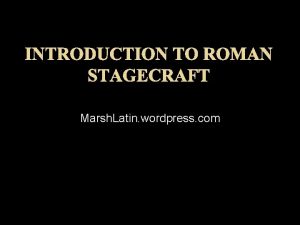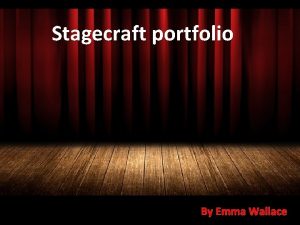Stagecraft 12 Areas of Stagecraft Your Task Over















- Slides: 15

Stagecraft 12 Areas of Stagecraft

Your Task Over the next 2 weeks you will be working on a small folio of stagecraft ideas. You will be writing, drawing, designing and describing your ideas and concepts in response to certain stimulus. YOU ARE BEING ASSESSED on this so make sure you are taking notes and completing all set tasks!

What is Stagecraft? Stagecraft is a combination of all the elements that create a show/performance. › These are the elements that bring the show to life and create a mood, feeling or atmosphere.

What are the 12 areas of Stagecraft? A cting D ramaturgy D irecting L ighting P rops P ublicity C ostume M ake-up/Hair S ound M ultimedia S et S tage

Props All of the items that the actors interact with. › Can be sitting on stage or can be brought in. Items could include: flowers, sword, suitcase, glass of water, umbrella. Sometimes props can be transformed into multiple objects.

Set Defines the mood of the play and sets the context. › Lets the audience know where the play is set. Eg. A jail, the beach, a cinema. Some plays have multiple set changes, where others use the same set/space for various locations.

Costume What the actors wear on stage. › The costume of a character tells the audience about the characters personality as well as the context of the play. › Where and when the show is set.

Lighting sets the mood for a show. › It can be used to highlight the action that is happening on stage, or it could be used to set the time of day/night. Eg. orange/red could be sunrise or sunset.

Sound in a show can match the action on stage or it can be music that creates an atmosphere for the show. › Not all sounds are made using electronic devices, something the actors themselves make sounds.

Multimedia can include slideshows, movies and projections. › This could be used to set the location of scene or could be used to give the audience and the characters more information and detail. › Multimedia, when used well can enhance the audience experience.

Publicity is use to promote the show. › It can include posters, tickets, the program, commercials (radio and television) presentations, fundraisers, anything that gets the name of the show out there to draw in an audience.

Directing is all of the movements and choices that the director has made. › Although the audience doesn’t see the director at work, the finished product is a result of all the directors choices. › Music, actions, emotions, the way lines are delivered etc.

Dramaturgy A Dramaturge will often edit and revise a play script, they will adapt it and reconceptualise the play. › They often work with the director, cast and sometimes the playwright, providing contextual research. Eg. the time period the play is set.

Stage Management This involves organising and coordinating the production. › This might include rehearsal schedules, runs meetings, organising auditions etc.

Acting involves the way the actor plays a character and their use of their expressive skills; voice, movement, facial expressions and gesture.
 Stagecraft batman
Stagecraft batman A streetcar named desire scene 10
A streetcar named desire scene 10 Stagecraft of color and line
Stagecraft of color and line Elements of stagecraft
Elements of stagecraft Stagecraft
Stagecraft Greek theater playwrights
Greek theater playwrights Theatre tools
Theatre tools Stage terminology
Stage terminology Scene shop tools
Scene shop tools Sound of music intro
Sound of music intro Tiered task bias task
Tiered task bias task Over the mountain over the plains
Over the mountain over the plains Siach reciting the word over and over
Siach reciting the word over and over Explain how to handing over and taking over the watch
Explain how to handing over and taking over the watch Give us your hungry your tired your poor
Give us your hungry your tired your poor Learning task 2 look for a health product at home
Learning task 2 look for a health product at home
